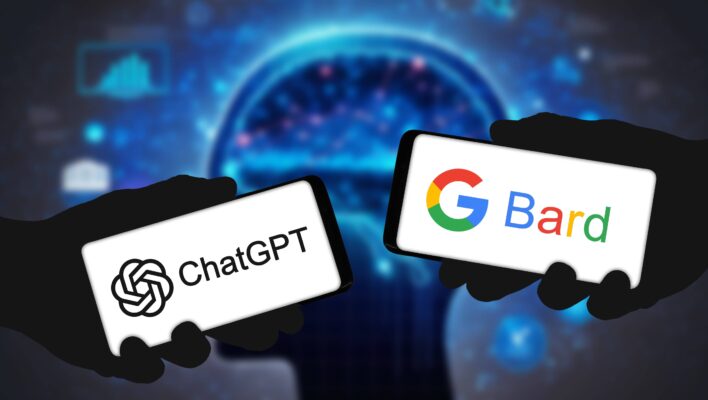Google Bard and OpenAI’s GPT are both state-of-the-art language models that are designed to generate human-like text and engage in natural language conversations with users. However, it is difficult to say which one is the “best” as they have different strengths and applications.
Google LaMDA is specifically designed for conversational applications and is optimized to generate more natural, engaging, and relevant responses to user input. It is trained on a large corpus of conversational data and can understand the context and nuances of a conversation more effectively.
On the other hand, OpenAI’s GPT is a more general-purpose language model that can be used for a wide range of applications, including language translation, text generation, and question answering. It is one of the most advanced language models available and has been trained on a vast amount of text data from the internet, books, and other sources, which allows it to generate highly informative and accurate responses.
In summary, both Google LaMDA and OpenAI’s GPT are highly advanced language models that have different strengths and applications. The best choice depends on the specific use case and application.
What is Chat GPT
Chat GPT is a large language model developed by OpenAI that is trained to generate human-like text. It is designed to answer questions, engage in conversation, and provide assistance on a wide range of topics. It uses deep learning algorithms and natural language processing techniques to analyze text input and generate appropriate responses. Chat GPT has been trained on a large corpus of text data from the internet, books, and other sources, which allows it to generate responses that are informed by a vast amount of knowledge and information.
There are several benefits of Chat GPT, including:
- Natural language processing: Chat GPT is designed to analyze and understand natural language input, which allows it to generate responses that are more human-like and relevant to the user’s input.
- Versatility: Chat GPT can be trained on a wide range of topics and can generate responses on almost any subject. This makes it a versatile tool for answering questions, providing assistance, and engaging in conversation.
- Large knowledge base: Chat GPT has been trained on a vast amount of text data from the internet, books, and other sources, which allows it to generate responses that are informed by a vast amount of knowledge and information.
- 24/7 availability: Chat GPT is available 24/7, which means that users can access its knowledge and assistance at any time of day or night.
- Efficiency: Chat GPT can provide immediate responses to user input, which can help to save time and improve productivity.
- Scalability: Chat GPT can be easily scaled up or down depending on the number of users and the volume of requests, which makes it suitable for both small and large-scale applications.
Overall, Chat GPT is a powerful tool that can help to provide quick and accurate responses to a wide range of questions and queries, and can be a valuable resource for businesses, organizations, and individuals looking to improve their productivity and efficiency.
What is Google Bard
Google Bard new conversational language model developed by Google that allows users to engage in natural language conversations with it. LaMDA stands for “Language Model for Dialogue Applications” and it is designed to generate responses that are more natural, engaging, and relevant to the user’s input.
LaMDA uses advanced machine learning algorithms to analyze and understand the context of the conversation, and it can generate responses that are informed by a vast amount of knowledge and information available on the internet. Google is planning to integrate LaMDA into various products and services, such as Google Assistant, Search, and Workspace, to provide users with a more personalized and natural conversational experience.
Chat GPT Vs Google Bard
ChatGPT and Google Bard are both large language models that use deep learning algorithms to process and generate natural language. However, there are some differences between the two.
- Purpose and Functionality: ChatGPT is designed specifically for generating human-like text in a conversational context, such as chatbots or virtual assistants. Google BERT, on the other hand, is designed to help Google understand the context and meaning behind search queries so that it can provide more accurate and relevant search results.
- Model Architecture: ChatGPT is based on the Transformer architecture, which is a type of neural network specifically designed for natural language processing. Google BERT also uses a Transformer architecture, but it includes a bidirectional training scheme that allows it to process the context of words in a sentence in both directions, improving its ability to understand the meaning of text.
- Training Data: ChatGPT was trained on a large corpus of text from the internet and other sources, while Google BERT was trained on a massive amount of text from a variety of sources, including Wikipedia, news articles, and books.
- Availability: ChatGPT is an open-source project that can be accessed and used by anyone, while Google BERT is a proprietary technology owned by Google and is not publicly available.
Conclusion
Overall, while ChatGPT and Google BERT both use deep learning to process natural language, they are designed for different purposes and have different architectures and training data.
